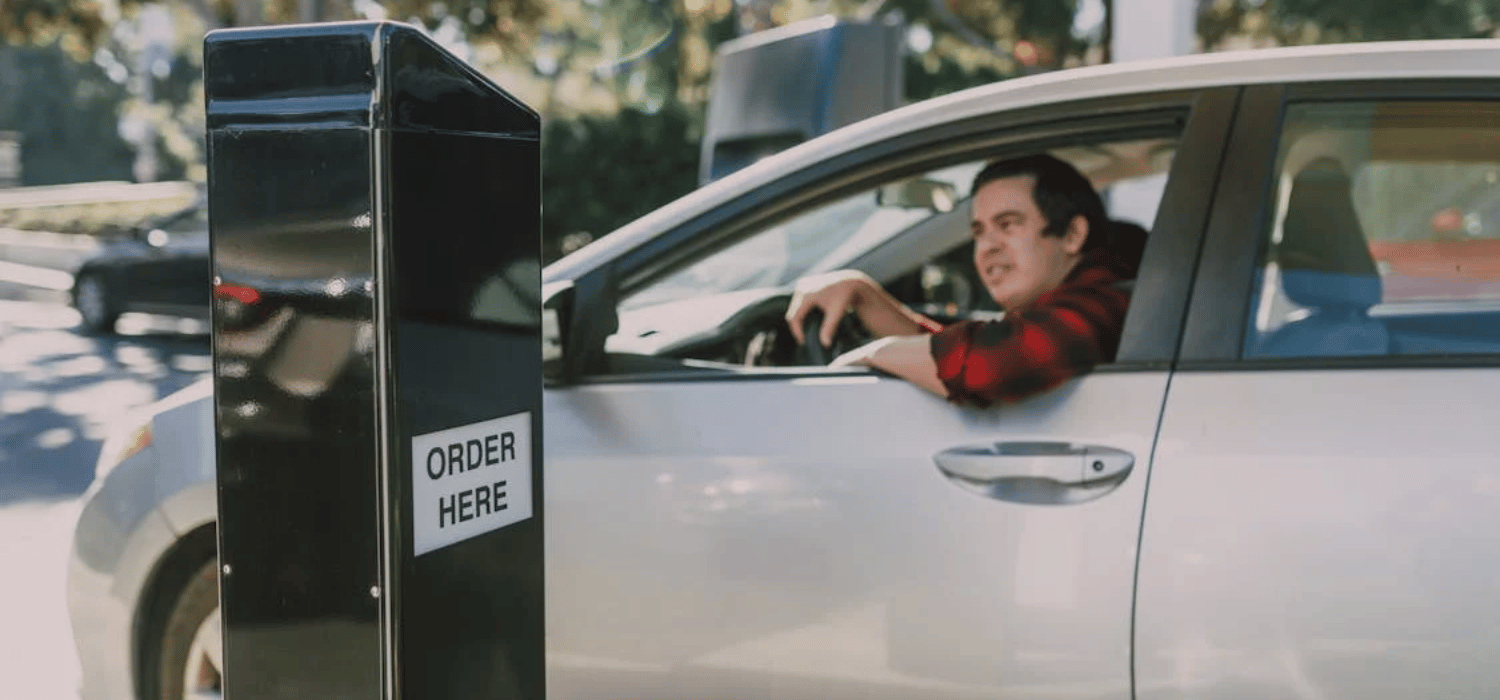
At a typical drive-thru, employees juggle multiple roles at once: taking orders over the headset, punching them into the POS, confirming availability, upselling, and coordinating with the kitchen. They do all these tasks while managing a growing line of impatient drivers. The pressure isn’t just constant. It’s escalating.
That’s why AI is gaining traction in quick-service restaurants (QSRs) as a necessary tool to relieve frontline stress, accelerate throughput, and free up staff to focus on food and hospitality where it matters most. This relief benefits not only the employees but also the entire operation, fostering a more harmonious and efficient work environment.
Drive-Thrus Under Pressure
According to Polaris Market Research, the QSR industry in the United States was valued at $289.68 billion in 2024, with over 50% of that revenue coming from drive-thru sales. However, that dominance comes at a cost: slower service, stressed staff, and stressed guests.
Drive Research reports that 42% of consumers list speed of service as a top factor when choosing a fast food restaurant. This emphasis on speed isn’t limited to drive-thrus, with 56% of responders valuing speed during in-restaurant experiences. This trend isn’t just pandemic-era behavior. It’s a long-term shift in how customers prefer to order and receive food.
However, that dominance comes with added strain. According to Intouch Insight, the average total drive-thru time in 2024 is 5 minutes and 29 seconds. While it is an improvement from last year’s numbers, it comes at a cost of higher guest expectations, increased order complexity, and heavier peak-hour loads.
Strain Behind the Headset
Moreover, order accuracy stands at 89%, but leaves 1 in 10 customers receiving the wrong order, a margin of error that results in refunds, wasted food, and frustrated employees. Despite better metrics, the fast food industry still faces a 130-150% annual employee turnover rate, one of the highest across all U.S. sectors.
Meanwhile, top chains are doubling down on drive-thrus. Shake Shack has opened over 30 drive-thrus, blending its fresh-food concept with fast execution. Chipotle deployed “Chipotlanes” at 25% of its locations, resulting in a 10-15% increase in sales. These lanes are designated for customers to pick up their prepaid app orders at specific times.
All of these chains face the same bottleneck: cognitive overload at the headset, where mistakes multiply under stress.
AI on the Mic, Staff at Their Best
Conversational AI can manage order-taking across all dayparts without fatigue, distraction, or human error. This is especially powerful during peak hours, when staff are overwhelmed by multitasking.
Instead of splitting their focus between the headset and the handoff window, employees can focus solely on preparing and delivering food with speed, accuracy, and a smile. This separation of duties, with the machine on the mic and human at the window, is already showing results in hundreds of locations.
Meet Hi Auto: AI Order Taker for Drive-Thrus
Hi Auto, a pioneer in conversational AI for QSRs, is already deployed in over 800 stores nationwide. Its AI order taker handles order-taking with 96% accuracy, outperforming many human interactions, especially in noisy environments where car engines and kids in the back seat make voice clarity challenging.
Hi Auto’s AI isn’t just a robot voice reading a script. It’s trained on millions of real drive-thru interactions, designed to understand regional accents, detect when customers are ready to order, and even upsell naturally. It’s fast, reliable, and improves consistency at scale, across all shifts, something nearly impossible to guarantee with rotating human crews.
And because it connects directly to the POS system, there’s no need for staff to re-key orders, a step that often causes costly delays and mistakes.
Hi Auto’s new Smart Ordering Display interface adds a visual confirmation element, showing guests what the AI heard and providing a multi-sensory, coherent experience. It tackles one of the primary challenges in QSRs: speed of service. For instance, instead of the customer asking available sauce options, Hi Auto displays them in the menu board.
Happier Employees at the Window
With AI taking over the ordering station, frontline workers can breathe and better focus on what matters most: preparing food, interacting with customers, and keeping operations running smoothly.
After all, when order pressure drops, service quality tends to rise. Restaurants using Hi Auto report not only faster throughput but also improved employee satisfaction, less turnover, and smoother onboarding, since one of the most complex jobs is now automated.
It’s a win-win: fewer errors and refunds with less stress on employees, who can now excel in roles they were hired for.
When the Handoff Feels Human
The handoff is that fleeting moment when food is delivered and a smile is exchanged. It is where loyalty is built. By allowing humans to focus fully on that interaction, AI doesn’t dehumanize the experience; it enhances it.
Customers notice when employees are flustered or rushed. They also notice when they’re calm, friendly, and attentive. Restaurants that deliver consistent service win repeat business, regardless of how long the line is.
The Future of Fast Service
In a sector where seconds count and staffing is tight, AI is a lifeline. Hi Auto proves that giving employees the space to focus on handoffs, not headsets, leads to faster lanes, happier guests, and a more empowered workforce.
For restaurants looking to future-proof their operations, the answer might just be found behind the window, where AI listens, staff shine, and customers leave smiling.
Written by McKinsey Nextrend Austin Staff